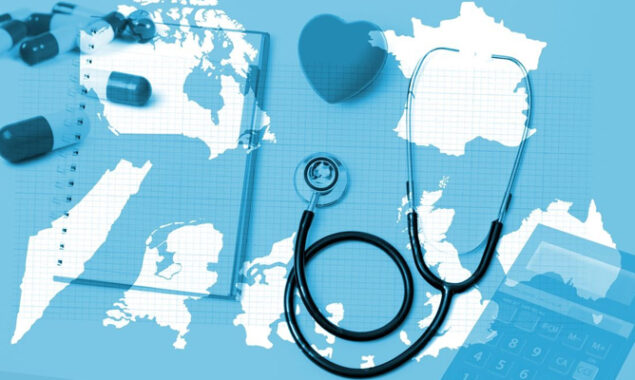Rising petrol prices
Petrobras, Brazil's state-owned oil firm, is once again in danger, trapped in...

China is seeing its highest rate of coronavirus cases since the epidemic began, with millions under lockdown and the healthcare system under strain.
China, one of the few countries remaining committed to a zero-Covid approach, intends to eradicate all infections through stringent lockdowns and the referral of all cases to secure institutions.
This puts further burden on China’s already-stressed healthcare system, as the highly transmissible Omicron variety spreads swiftly across the population.
The following are some of China’s primary obstacles in the fight against Covid:
– Vaccination rates –
Beijing reports that by mid-March, more than 1.2 billion individuals in China had received two doses of a Covid vaccine, over 90% of the population.
Additionally, it has begun a booster campaign, but more than half of the population has not yet received a third dose.
A significant difficulty is safeguarding the elderly, with just about half of Chinese adults over the age of 80 receiving two vaccinations and less than a fifth receiving a booster.
Only little more than half of those over the age of 60 had gotten a third injection.
Officials have started a new campaign to persuade older adults to receive a third dosage, following a wave of severe cases in Hong Kong’s hospitals, the majority of which were unvaccinated senior patients.
China uses indigenous vaccinations and has not authorised any imported injections, but it has granted “conditional” permission to Pfizer’s Paxlovid for Covid-19.
Chinese vaccines have a lower rate of effectiveness in tests when compared to a large number of foreign vaccinations.
However, numerous Chinese vaccine manufacturers recently received approval to conduct clinical trials on a locally manufactured mRNA Covid vaccine — the same technology used in the Pfizer/BioNTech and Moderna vaccines.
– Hospitals are overcrowded –
Even prior to the epidemic, China’s healthcare system was understaffed and failing to keep up with the country’s massive and ageing population.
China has just 2.9 general practitioners per 10,000 inhabitants, according to the National Health Commission. Britain has almost the same amount per 1,000 inhabitants.
Certain sections of China are grossly under-resourced.
Authorities in Jilin province, which recently had a Covid cluster, said that there were only 22,880 hospital beds available for a population of 24 million.
Researchers at Peking University have warned that China might face a “colossal epidemic” that would swiftly overwhelm the country’s medical system if the government lifted prohibitions to the same extent as Europe and the United States.
The researchers estimated that this would result in hundreds of thousands of additional cases every day.
– Urban-rural split –
Despite major decreases in rural poverty, significant disparities in access to healthcare persist between rural and urban areas.
Much of China’s money, equipment, and expertise are concentrated in top-tier cities, where the wealthy have access to a variety of hospitals, including foreign clinics.
According to a report released last year by the National Health Commission, China’s rural districts had just 1.6 medical personnel per 1,000 people and only 1.5 hospital beds.
Despite the fact that over 40% of the population lives in rural areas, rural China had a total of just 1.4 million hospital beds.
Rural Chinese who travel to cities for jobs also face red tape when it comes to healthcare.
– Preserving a ‘zero-Covid’ state –
Shanghai has slipped into catastrophe, despite being China’s most developed metropolis, as officials scurry to locate enough beds for patients who test positive.
According to authorities, 130,000 more beds are ready or under construction in temporary facilities.
Around 40,000 beds are being constructed at the National Exhibition and Convention Center in Shanghai.
However, the majority are now filled by individuals who have either minor symptoms or none at all.
Meanwhile, residents of Shanghai who are being held hostage have complained about a lack of access to food and medications unconnected to Covid.
According to Yanzhong Huang, a senior fellow for global health at the Council on Foreign Relations in New York, “Draconian, heavy-handed zero-Covid control methods” have swamped the medical system.
This is “a consequence that the zero-Covid policy is intended to avoid,” he told AFP.
As reinforcements, 2,000 soldiers and 38,000 medical personnel from throughout the country have been dispatched to Shanghai.
At least two asthma sufferers allegedly died as a result of being denied medical care owing to Covid restrictions.
As the system becomes increasingly strained, some patients’ close contacts are being permitted to quarantine at home, and quick home testing kits have been used for the first time.
Shanghai health commission chairman Wu Jinglei stated last week that despite having 50% more ambulances on the road than before the epidemic, the city was still unable to fulfil all medical needs.
Catch all the International News, Breaking News Event and Latest News Updates on The BOL News
Download The BOL News App to get the Daily News Update & Follow us on Google News.